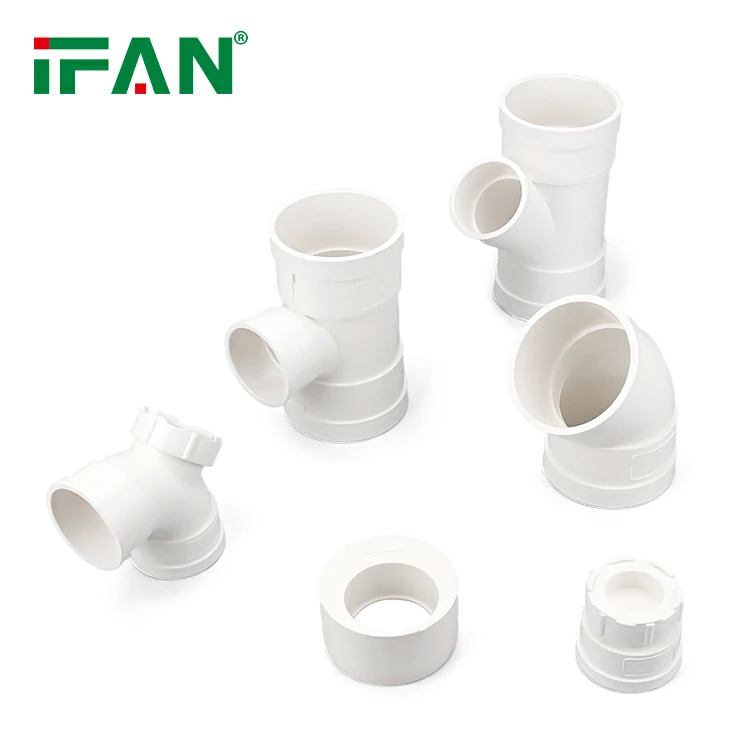Introduction to UPVC Pipe Fittings
UPVC stands for unplasticized polyvinyl chloride, a durable plastic commonly used in plumbing.
UPVC pipe fittings are lightweight, cost-effective, and resist corrosion and chemical damage.
These fittings are popular for cold water systems, drainage, and irrigation projects.
However, many users wonder if UPVC pipe fitting can handle hot water applications.
Understanding the material properties is essential before using them in heat-prone systems.
This article explores the suitability of UPVC pipe fitting for hot water systems.
We will examine performance limits, temperature tolerance, and safe alternatives.
Clear guidance helps ensure proper system design and long-term functionality.
Thermal Limitations of UPVC Material
UPVC is rigid and strong but has specific thermal limits due to its plastic nature.
Typically, UPVC pipe fitting performs well with water temperatures below 60°C (140°F).
Above this range, the material starts to soften, warp, or lose structural integrity.
Constant exposure to high temperatures accelerates material aging and potential leaks.
UPVC cannot handle pressurized hot water lines for extended periods.
Therefore, it is not recommended for domestic hot water supply systems.
While it may tolerate short bursts of warm water, prolonged use causes damage.
Alternative materials are advised where temperatures exceed 60°C.
Cold Water and Drainage Suitability
UPVC pipe fitting is excellent for cold water and non-pressurized systems.
In residential plumbing, UPVC is widely used for cold mains and drainage systems.
Its resistance to corrosion and chemicals ensures reliable long-term use in such settings.
The fittings do not degrade under normal pressure and ambient temperatures.
They maintain water quality since they do not leach harmful substances.
UPVC fittings are ideal for graywater discharge and sewer lines.
These systems generally carry water at room or slightly elevated temperatures.
For these purposes, UPVC remains a safe and durable choice.
Performance Under Thermal Cycling
Thermal cycling occurs when systems undergo frequent heating and cooling.
UPVC pipe fitting does not perform well in thermal cycling environments.
Rapid expansion and contraction can cause cracking or loosening at the joints.
Unlike CPVC or PEX, UPVC lacks the flexibility to handle temperature variation effectively.
In industrial or solar applications, this becomes a significant concern.
Such instability may lead to maintenance issues and shortened service life.
Using UPVC under these conditions may increase long-term repair costs.
Proper material selection based on temperature exposure is essential for system integrity.

Real-World Usage Scenarios
In real projects, UPVC pipe fitting is used in agricultural and industrial settings.
For example, it’s commonly used in irrigation lines, water tanks, and chemical pipelines.
These systems typically carry water below the danger zone for UPVC deformation.
However, when hot water is involved—such as in food processing—UPVC fails.
Facilities that tried using UPVC with hot wash water experienced leaks and cracks.
Therefore, UPVC’s usefulness depends heavily on the temperature and application environment.
Consulting with system designers before choosing UPVC is highly recommended.
Using it correctly ensures cost savings and avoids future operational issues.
Alternatives for Hot Water Applications
For hot water systems, other materials outperform UPVC pipe fitting.
CPVC (Chlorinated Polyvinyl Chloride) withstands temperatures up to 93°C (200°F).
It offers the same chemical resistance but with higher thermal tolerance.
PEX (Cross-linked Polyethylene) is another reliable choice for flexible hot water lines.
It’s widely used in domestic hot and cold plumbing due to its durability.
Copper remains a traditional option, valued for its strength and heat resistance.
Choosing the right material depends on temperature, pressure, and installation needs.
These alternatives ensure safety and reduce failure in hot water systems.
Installation and Safety Considerations
Installing UPVC pipe fitting for hot water can pose safety hazards.
Heat-softened pipes may burst or detach under pressure, causing water damage.
Incorrect use could lead to system failures in homes or commercial settings.
Installers must understand the operating limits of UPVC before selection.
It is vital to follow manufacturer specifications and local building codes.
Labels typically indicate temperature ratings—always verify before installation.
Additionally, professional guidance helps ensure safe plumbing practices.
Avoiding misuse protects property and occupants from avoidable damage or injury.
Conclusion: Use with Caution
UPVC pipe fitting is not suitable for continuous hot water use.
Its structural limits prevent it from handling high temperatures effectively.
Though ideal for cold water and drainage, it fails under sustained heat.
For hot water systems, CPVC, PEX, or copper are better choices.
Correct material selection ensures system safety, performance, and longevity.
Always consult product specifications and professional advice before installation.
UPVC remains a valuable option when used within its safe temperature range.
With informed choices, users can build reliable and efficient piping systems.

